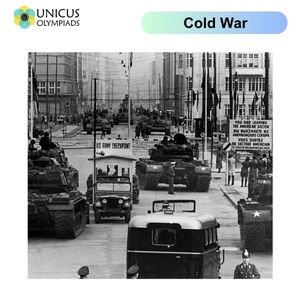

The Cold War was a period of intense geopolitical tension between the Soviet Union and the United States, along with their respective allies, from the end of World War II in 1945 to the collapse of the Soviet Union in 1991. It was marked by a state of military and political rivalry, yet it never resulted in direct warfare between the superpowers. Instead, the Cold War was characterized by proxy wars, nuclear arms races, espionage, ideological conflict, and competition for global influence.
The origins of the Cold War can be traced to the aftermath of World War II, when the United States and the Soviet Union emerged as the two dominant global superpowers. While both nations had allied against the Axis powers, their political ideologies were diametrically opposed:
The differing ideologies and contrasting political systems contributed to growing distrust and competition between the two superpowers. The ideological divide was further fueled by the following:

The Cold War saw a number of key events that defined global political, economic, and social dynamics:
The Cold War had a profound impact on both the domestic policies and the international relations of the superpowers, as well as the rest of the world:
The Cold War was fundamentally a struggle over political ideology and the spread of competing systems—communism and capitalism. The superpowers each sought to expand their influence and ideologies around the world, often leading to proxy wars, covert operations, and diplomatic struggles.
The Cold War's impact is still felt today in various ways: